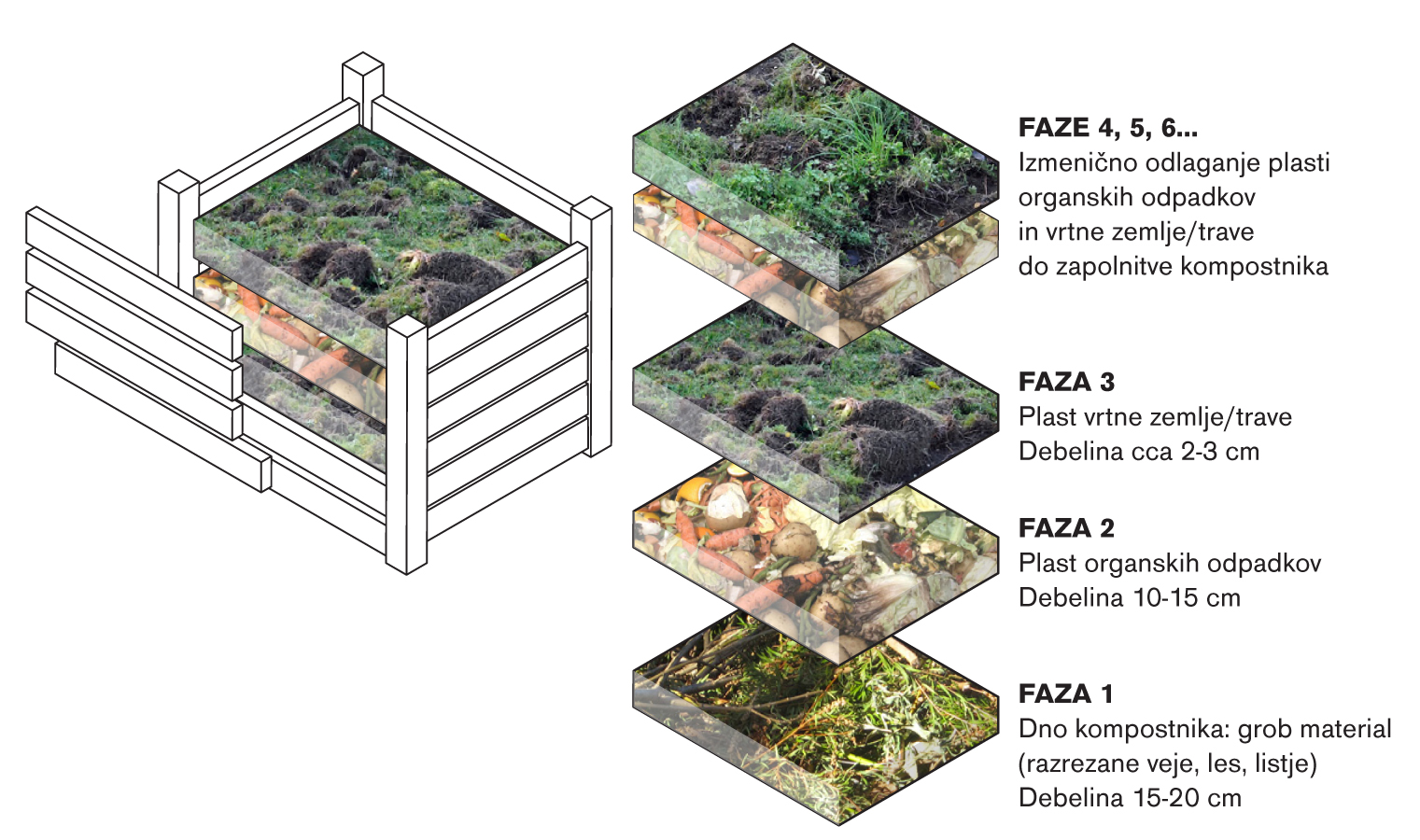Composting in the compost box
In order to assist you with composting, we have prepared a practical “Composting” brochure, featuring the most important information about the techniques and processes of composting, and instructions on how to assemble your own home-compost box. The gardener Worm will be pleased to help you – inviting children to share in composting kitchen waste.

For successful composting in your home garden, if you have the desire and circumstances, you will need green garden waste and biodegradable kitchen waste. When it comes to composting biodegradable kitchen waste there are two questions: the first is regarding food waste composting (meat, fatty food and bones), and the second concerns citrus composting (oranges, lemons and bananas), which on the one hand attract pests, and on the other hand impact the quality.
Composting – back to nature (short instructions)
Why composting?
-
for improved quality of soil composition,
-
for better holding of humidity,
-
for better soil ventilation,
-
for better heat accumulation,
-
for production of healthy plants, and for fruits with better taste.
Assembly of a home compost box
The compost box should be located in the shade or half-shade in your garden, and should be protected from the wind and easily accessible. The home compost box should be in direct contact with the soil, and from all four sides it should be ventilated. It shouldn't disturb your neighbours (bad odour). These are basic rules for all standard systems. Irrespective of the box type, it could be opened, wooden, plastic, or closed.
Techniques for correct home composting
The home compost box should be in direct contact with the soil. The ground layer of mulched tree branches is for good ventilation below, and prevents water accumulation. For an optimal decomposition process there should be sufficient oxygen, which should be possible if the dry structured material (branches and green cut) and the humid non-structured material (grass, kitchen waste) are always mixed inside the box.
The kitchen waste and food leftovers should be covered by leaves, grass or soil, or they should be buried to avoid unpleasant odours and so as not to attract unwanted guests, such as rats or birds.

Composting process
In the decomposition process, which takes place at temperatures between 50–60 °C, the microorganisms, bacteria and fungi produce nutritive substances, and they require a certain amount of humidity. During longer dry periods over the summer months, we recommend that you humidify the compost box. Once the house-compost box is full, or after six months, its contents should be displaced. By doing this the box is ventilated and decomposition is accelerated. Mature compost should be passed through a sieve with openings of 15–20 mm, the rest being used for the further decomposition of similarly-structured material.
How should the produced compost be used?
Once sieved through a fine sieve, the mature compost can be used for pot plants. Bigger, non-sieved compost can be used for fertilizing fruit trees and other bigger plants. The compost can be spread on the surface, or it can be mixed into the soil.
Advice and hints
-
Only a thin layer of fresh grass can be put on the compost, so that the material can begin to rot.
-
Organic waste should not be pressed down.
-
Compost should be dry, and it should not be waterlogged.
-
Only small quantities of tainted meat products can be put in the compost.
-
If the compost has an ammonia smell, there is too much nitrogen. And if it smells like rotten eggs, there isn’t enough air.
-
If the level of acidity in the compost is too high, lime can be added. And the microorganism will be much more effective in alkaline conditions.
-
Good compost of high quality can be produced only from good “input” material.
